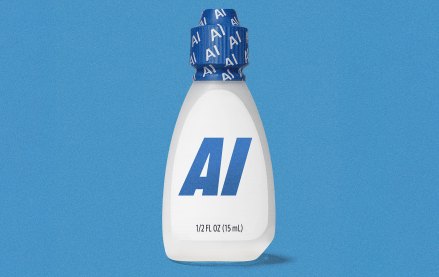
Virtual reality is known for letting viewers experience new places, but now it can help them experience life as another person.
Already a plaything for car brands like Honda and travel brands like Thomas Cook, the technology is now being tested by a flurry of charities in the U.K.
“When done right, it can completely transport you,” said Richard Beer, creative director at agency Don’t Panic. “You can close the gap between everyday people and the subjects they feel empathy toward.
Here, then, are three charities working on VR in the U.K.
Alzheimer’s Research UK
Alzheimer’s Research UK released “A Walk Through Dementia” on Google Play earlier this month to educate people on the symptoms of the disease beyond memory loss. It drew 25,000 visits to the site in the opening week.
In three scenarios, viewers can see first-hand the challenge that everyday activities pose to someone with dementia. For example, making a round of tea when instructions and hand-eye coordination fail them. The experience is narrated by actress Dame Harriet Walter.
The whole process from idea to execution took roughly a year, according to Timothy Parry, the charity’s head of brand. He’s bullish on VR’s trajectory; for him, the medium is the biggest development in film since cinema itself.
“It works harder for us than any other medium,” he said. “You can put people right in the middle of the issue you are dealing with, something a conventional camera can’t quite do.”
VR studio Visyon worked pro bono with the charity, enabling it to create something otherwise out of its budget. While costs of making 360-degree films are coming down, partnerships can be a way for charities to access this emerging tech without breaking the bank.
“Any other charity wanting to get into VR should consider partnerships that can make these projects happen. It’s a way for them [agencies] to showcase talent, and for us to tackle the issue: everyone wins,” Parry said.
Samaritans
U.K. charity Samaritans runs a 24-hour helpline that’s open to anyone needing emotional support. As part of its latest campaign, #WeListen, the charity created a 360-degree video.
The aim is to get people to understand the difference between listening and hearing peoples’ problems. The viewer is sitting in a cafe, tasked with listening to a man discuss his problems at home. However, the ability to spin around means there’s a host of ringing phones and clinking crockery to distract them from the task at hand.
“We chose to shoot in 360 because it represents the real experience of engaging with someone one-to-one much more closely than a static video,” Kimberley Anderson, head of digital communications at Samaritans, told Digiday.
360 video brings with it questions for any content creators about how much, or little, to control the audience’s journey. You can’t guide the narrative in the way that traditional video, with mechanisms like closeups and cuts, can. Samaritans chose to riff on this unique trait of the medium, as a reflection of real life.
“For this campaign, we thought it important to tell a story that’s more reflective of real life, with its constant distractions and interruptions,” Anderson said.
So far, the video, created by The Good Agency, has clocked up 54,000 views on YouTube.
National Autistic Society (NAS)
The National Autistic Society’s first-person video of an autistic child experiencing sensory overload during a shopping trip reached nearly 5 million views after its YouTube debut.
Now, the charity is looking to build on the success of “Too Much Information” with a grueling VR experience, released last Thursday. As 10-year-old Alex, the viewer is assaulted by bright flashing lights and chaotic sounds as their vision closes in.
“So far, VR has been used to make things feel real, to ape reality. But our project was about making things ‘hyper-real’ by adding effects,” Tom Madders, NAS’ head of campaigns, told Digiday.
The aim of the video, created with Don’t Panic, is to challenge the narrow view of autism seen in films, cliches and headlines. “Over 99 percent of people know about autism, but 16 percent of families affected by it feel people understand them,” Madders said.
The charity’s 360-degree video has racked up over 203,000 views since it was posted on Facebook. It can also be accessed via the app or watched on YouTube with a Google Cardboard headset.
While Madders wants people to experience the film from their homes, adoption isn’t quite there yet. So, the charity is touring the experience at 17 Intu shopping centers in the U.K. with Samsung Gear VR. The aim is to reach 8,000 people.
While the film is not cheap, Madders is confident it will have a longer shelf life than other campaigns, with interest from councils and businesses who want to purchase it for educational use. “Results will tell, of course, but we certainly feel like it’s value for money,” Madders said.
More in Marketing

Lowe’s wants to do more with AI shopping in 2026
Mylow, a shopping assistant powered by ChatGPT that launched in March, is already driving double the conversion rate for online shoppers.

‘This isn’t the old pre-roll world’: YouTube has been talking TV — now it’s selling that way
YouTube is ramping up efforts to get TV’s largest advertisers to move more of their budget into its platform.

As every screen becomes shoppable, attribution problems resurface
As more media environments become points of purchase, attribution and measurement remain the thorn in the side of commerce execs.





